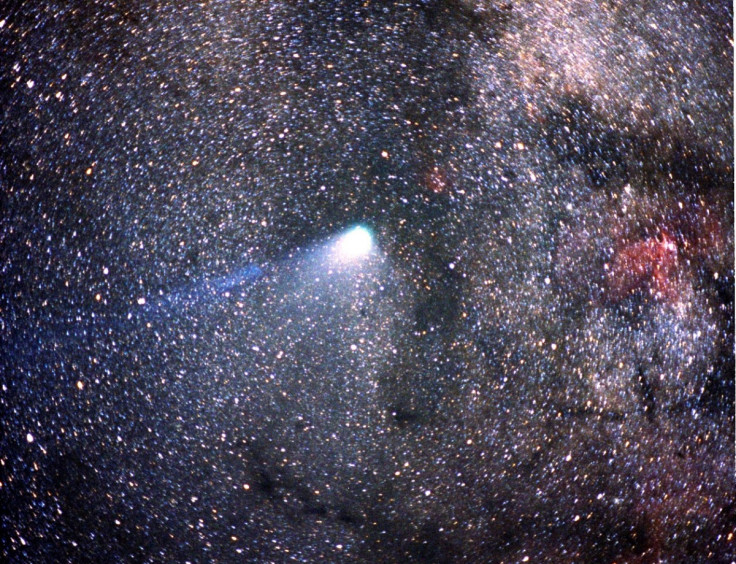Halley's Comet Dust 'Caused Droughts and Famine Centuries Ago'

Climate change in AD 535-536 was caused by dust spilled into the atmosphere by Halley's Comet, according to a new study.
The dust is thought to have cooled the atmosphere to an extent causing unseasonal weather and crop failures, leading to droughts and famine.
The climate change and accompanying famines triggered by the dust veil are also believed to have rendered humans more susceptible to "Justinian's plague" of AD 541-542, Europe's first recorded emergence of Black Death.
The years are recorded in history for unusual and extreme weather events in much of the northern hemisphere. The event was believed to have been caused by an extensive dust veil, while the observed episode was explained using several hypotheses including a large volcanic eruption in the tropics and debris from comet impact.
Dallas Abbott, a research scientist at Columbia University's Lamont-Doherty Earth Observatory, told Livescience that smoke from volcanic eruption alone cannot explain the spread of dust across continents.
Researchers have found evidence of cometary residue on Greenland ice laid down between AD 533 and 540.
"I have all this extraterrestrial stuff in my ice core", Abott said at a meeting organised by the American Geological Union.
The ice cores from the seven-year period have deposits of tin, nickel and iron oxide spherules from an extraterrestrial source.
High levels of tin are associated with alien dust especially that of a comet, Abbott explained. Studies suggest that the alien particulate matter was deposited during spring time, coinciding with the Eta Aquarid meteor shower from Halley's Comet.
Scientists say that in the next four to five years of the impact, the earth cooled by as much as 5.4° Fahrenheit (3° Celsius).
A 2004 study estimated that a comet fragment about 2,000 feet (600 metres) wide is enough to have caused AD 536-537 cooling event.
However, this is not the only comet impact to have affected human beings in the last 20,000 years after the end of the Stone Age.
About 13,000 years ago, a probable impact event over North America is suspected to have caused widespread forest fires in the continent, leading to the extinction of several animal species and the subsequent collapse of the North American Clovis culture.
Explosion in Atmosphere
A major airburst caused by an asteroid or comet can be traced not too far back in recent history. In 1908, a large explosion in the atmosphere was caused by burning extraterrestrial rocky fragments near the Tunguska River in Russia.
Different Russian studies on the event reported that the native settlers heard sounds of explosion accompanied by a shock wave that knocked people off their feet and broke windows hundreds of kilometres away and levelled forests spread over an area of about 2,150 km<sup>2 (830 mi<sup>2).
© Copyright IBTimes 2025. All rights reserved.





















